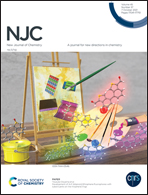Utilization of waste wool felt architecture to synthesize self-supporting electrode materials for efficient energy storage
Abstract
Wool felt, a kind of natural biomass material, is usually discarded directly after industrial application. However, wool felt with an overhead network and open-channel architecture can be utilized as electrode materials for energy storage. In the present work, we converted wool felt into conductive materials via in situ polymerization of pyrrole and a hot-pressing process. The morphology and structure of the prepared PPy@wool felt were characterized by Scanning Electronic Microscopy (SEM), Energy Dispersive Spectrometry (EDS), Fourier Transfer Infrared Spectroscopy (FTIR), X-ray Diffraction (XRD) and X-ray Photoelectron Spectroscopy (XPS). Compared with other biomass fiber sources, such as cotton and silk fabrics, the prepared PPy@wool felt with interconnected structure exhibited a higher electrical conductivity of 3.94 Ω □−1. As an electrode application for supercapacitors, the hot-pressed PPy@2D wool presented excellent areal specific capacitance of 6502.3 mF cm−2 and a high energy density of 577.99 μW h cm−2 at 0.25 mA cm−2. When the current density was 5 mA cm−2, the capacitance retention rate remained 80.23% of its initial areal specific capacitance after 1000 cycles. The enhanced electrochemical performance can be attributed to the unique network structure and thermal setting characteristics of wool felt. The production of electronic devices, sourced from waste wool felt, will create the premise for circular economy systems in the electronics sector.



 Please wait while we load your content...
Please wait while we load your content...